Croatia’s Plitviče Lakes National Park: Disney couldn’t do it better!
Posted on August 23,2018 By John Compisi
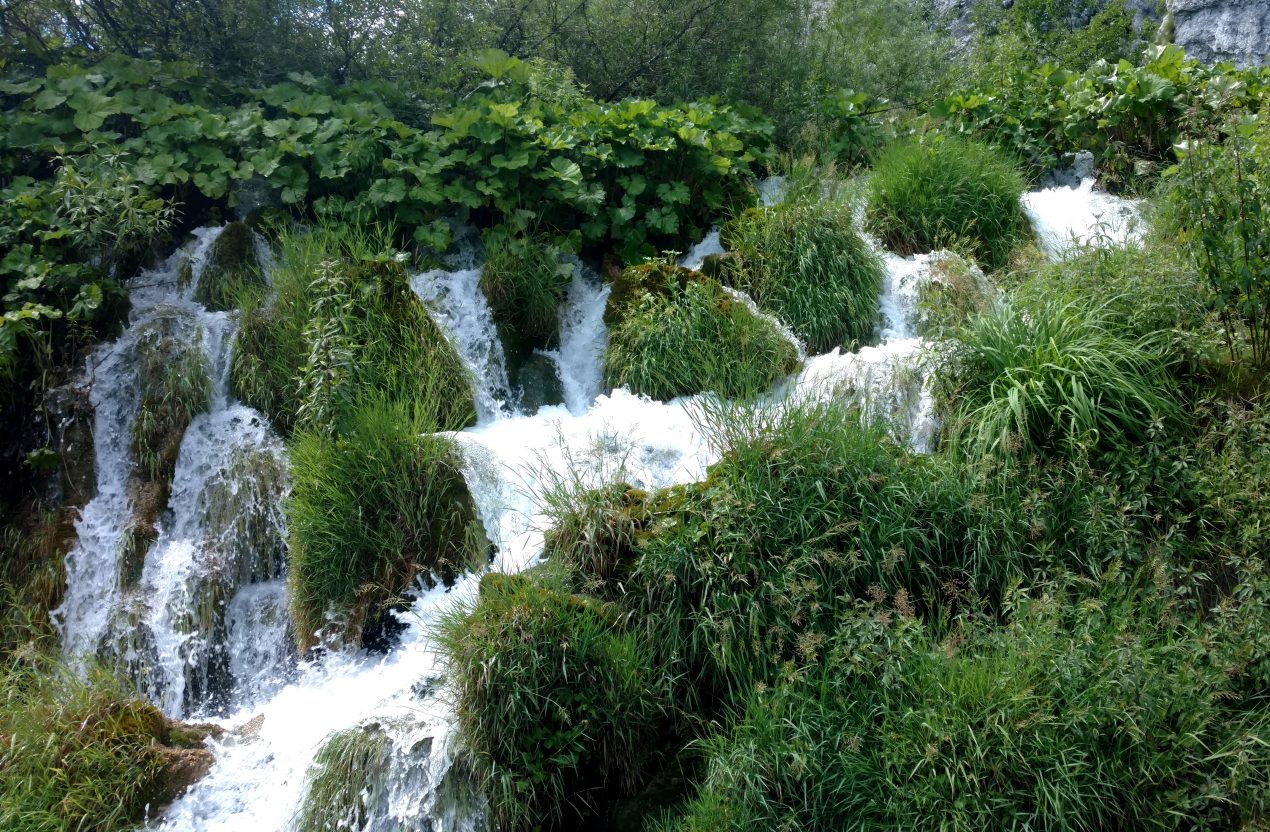
Plitviče Lakes National Park is an amazing geologic feature in Croatia that, each year, dazzles over a million visitors from all over the world. Plitviče, pronounced [plîtʋitse]), is one of the oldest (established in 1949) and the largest national park in Croatia.
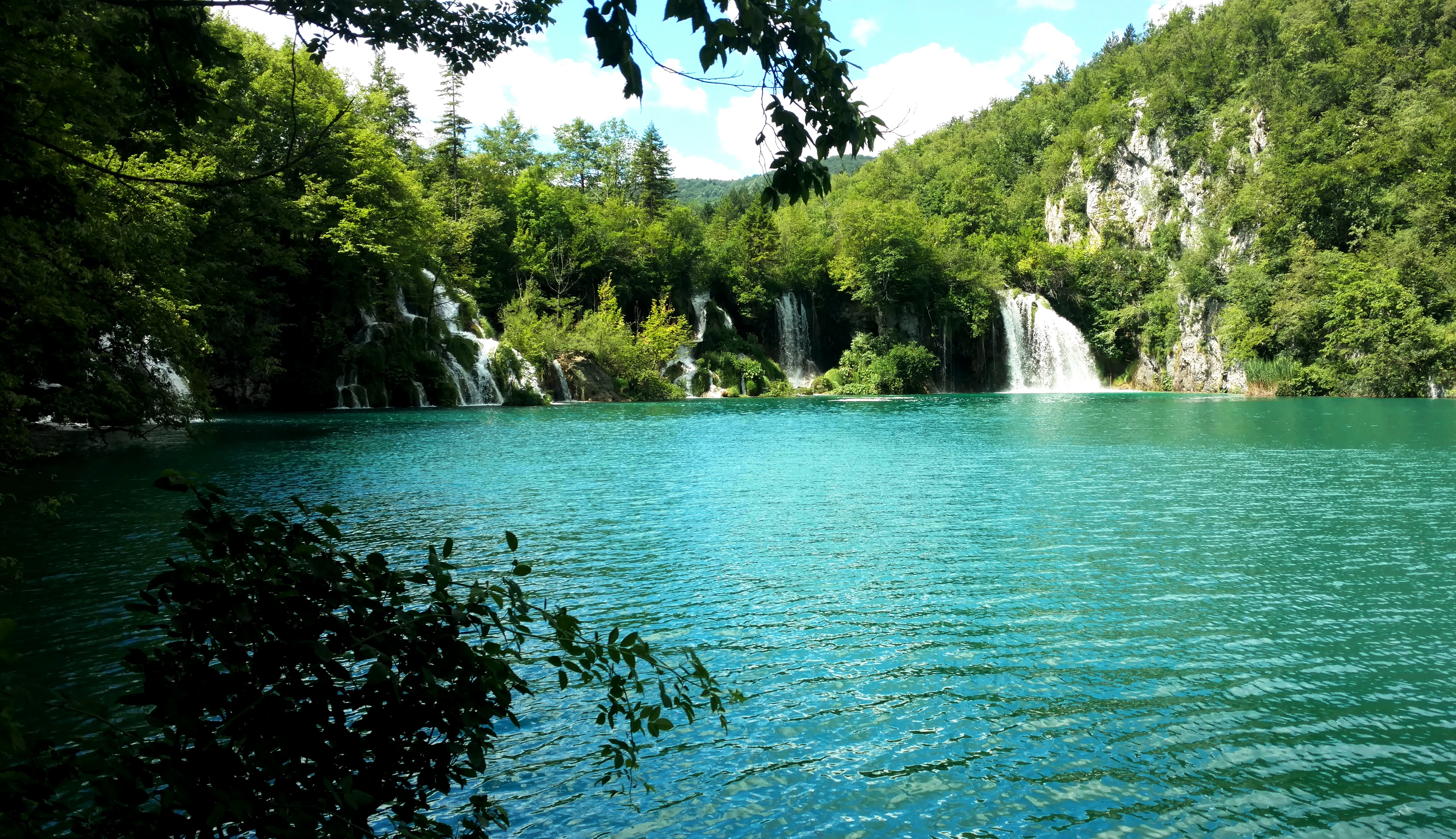 One of the numerous cascades in Plitviče Lakes National Park (L.Compisi)
One of the numerous cascades in Plitviče Lakes National Park (L.Compisi)
This 295-sq.-km (114-sq-miles) forest reserve is located in central Croatia approximately 130 kilometers south of Zagreb along the border with Bosnia-Herzogovina. What makes it a UNESCO World Heritage site (registered in 1979) is its chain of 16 terraced lakes, joined by pristine waterfalls that extend into a limestone canyon.
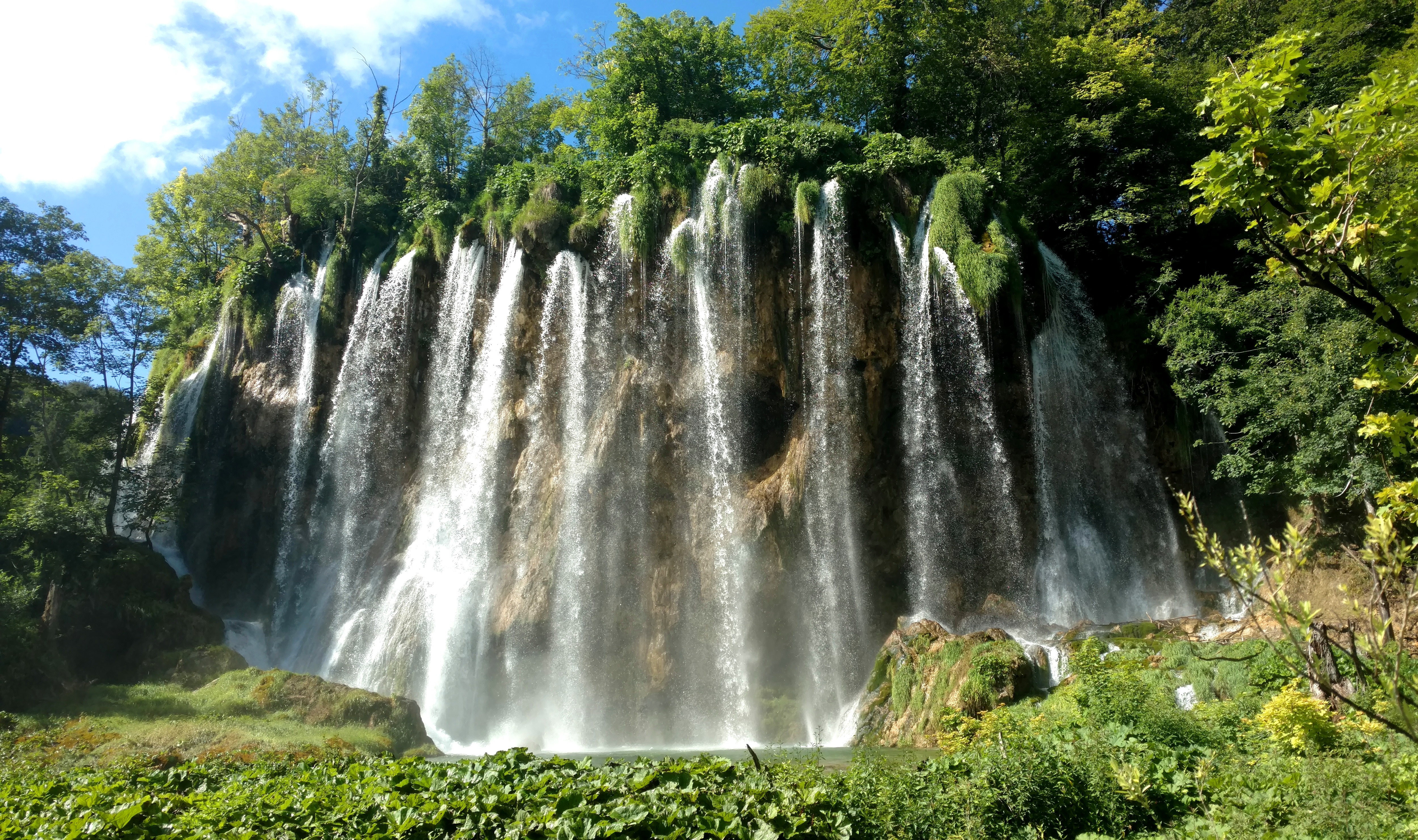 Have you ever seen anything like this? (L.Compisi)
Have you ever seen anything like this? (L.Compisi)
Truly fantastic well maintained board walkways and hiking trails wind around and across the water, and an electric boat links the 12 upper and 4 lower lakes in a mile long cruise. The lower lakes areas are the site of Veliki Slap, a 78m-high waterfall. The elevation change from the top to the bottom is about 430 feet over about 5 miles. This makes the walk rather gentle and relaxing regardless if you are walking up or down. We walked down.
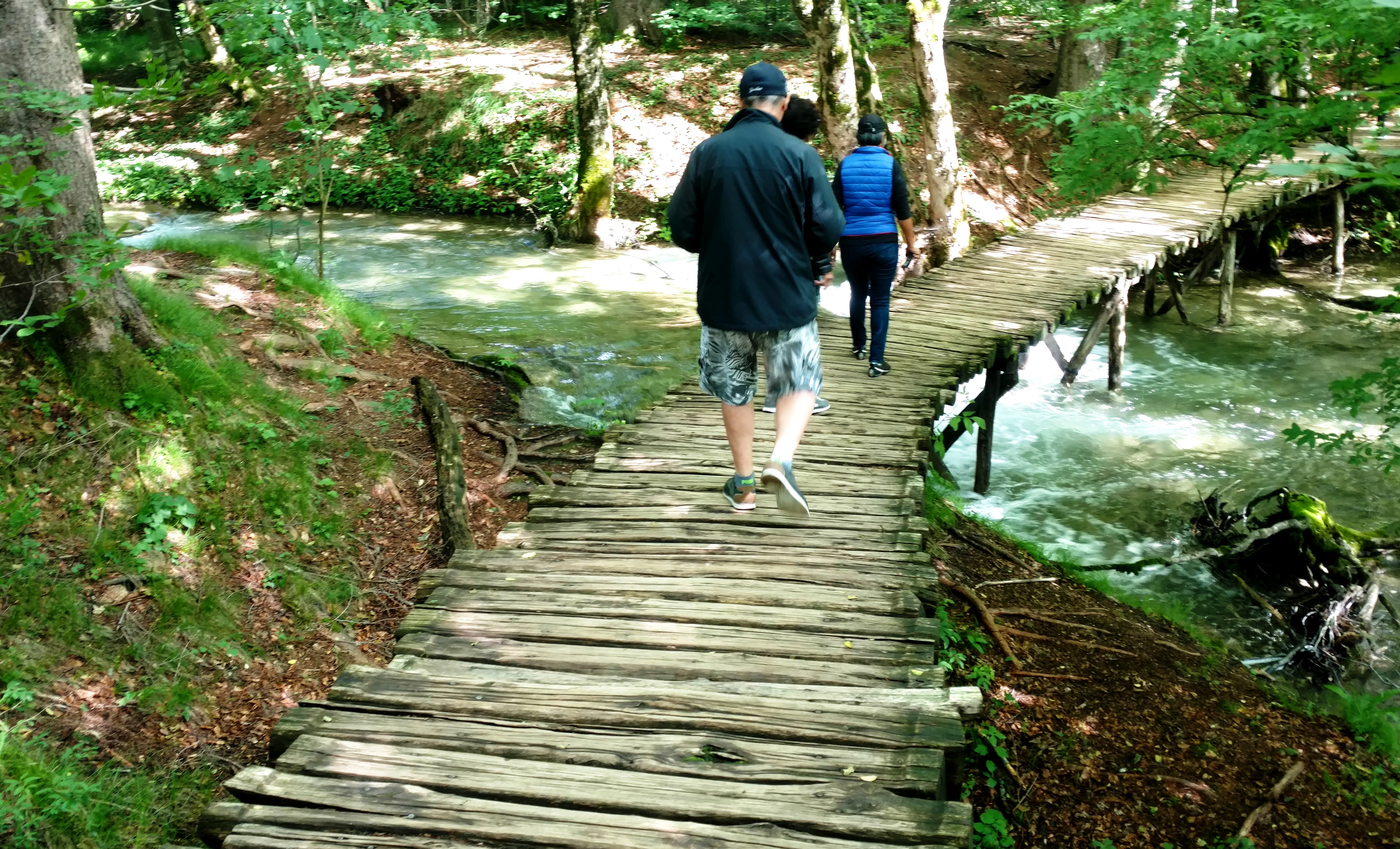 Water rushes under your feet as you walk the boardwalk (L.Compisi)
Water rushes under your feet as you walk the boardwalk (L.Compisi)
The lakes display a polychromatic array of water colors ranging from azure to green, grey or blue. The colors change constantly depending on the quantity of minerals or organisms in the water and the angle of the sunlight. Truly dizzying! Even Disney could not match Mother Nature’s demonstration of brilliance, color and light.
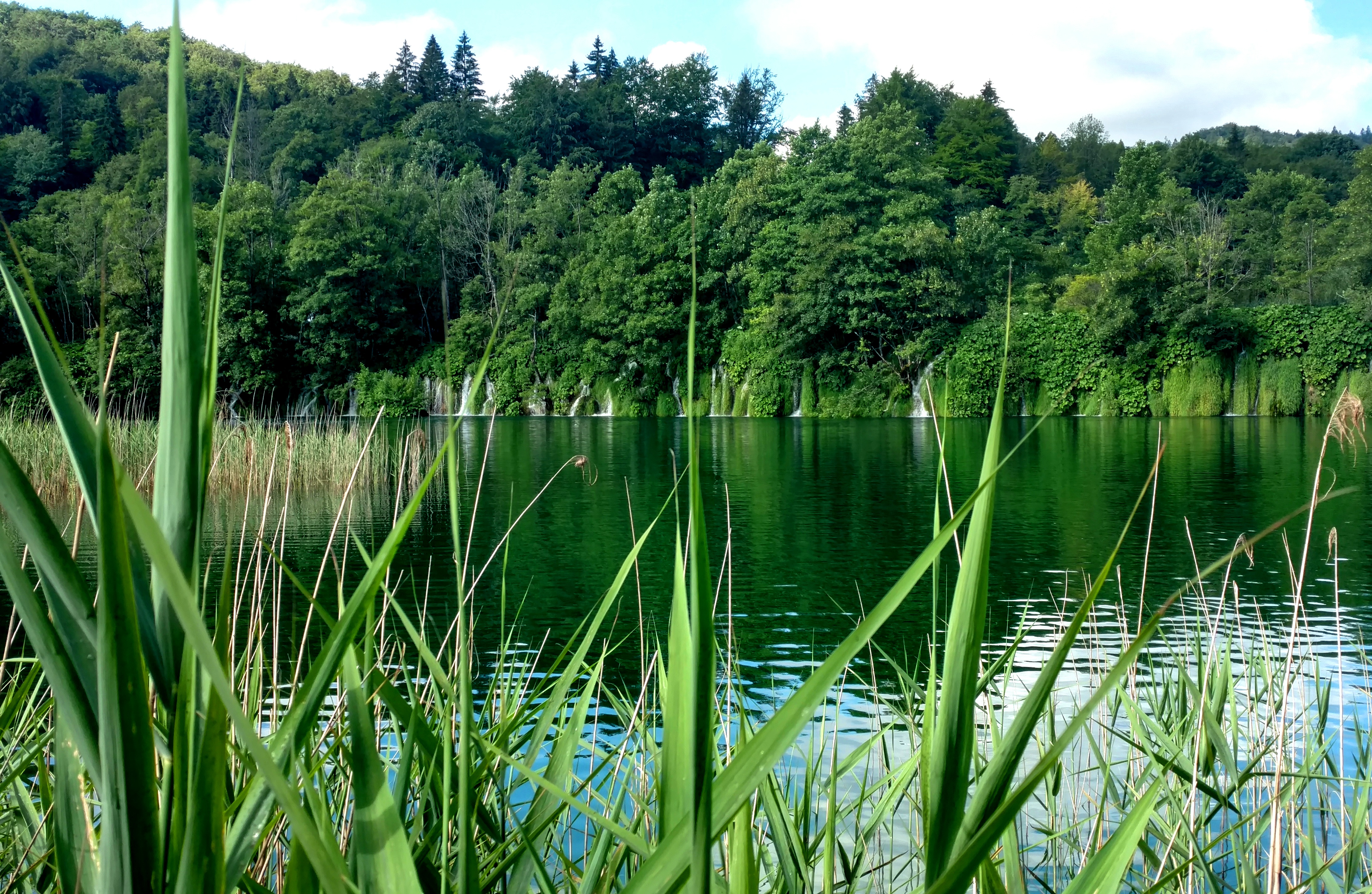 Tranquility in the foreground and cascades in the back (L.Compisi)
Tranquility in the foreground and cascades in the back (L.Compisi)
Speaking of Disney, the park became famous in Central Europe and beyond during the 1960s and 1970s through several Western film productions of German novelist Karl May. Many other-worldly scenes have been shot at the lakes or waterfalls.
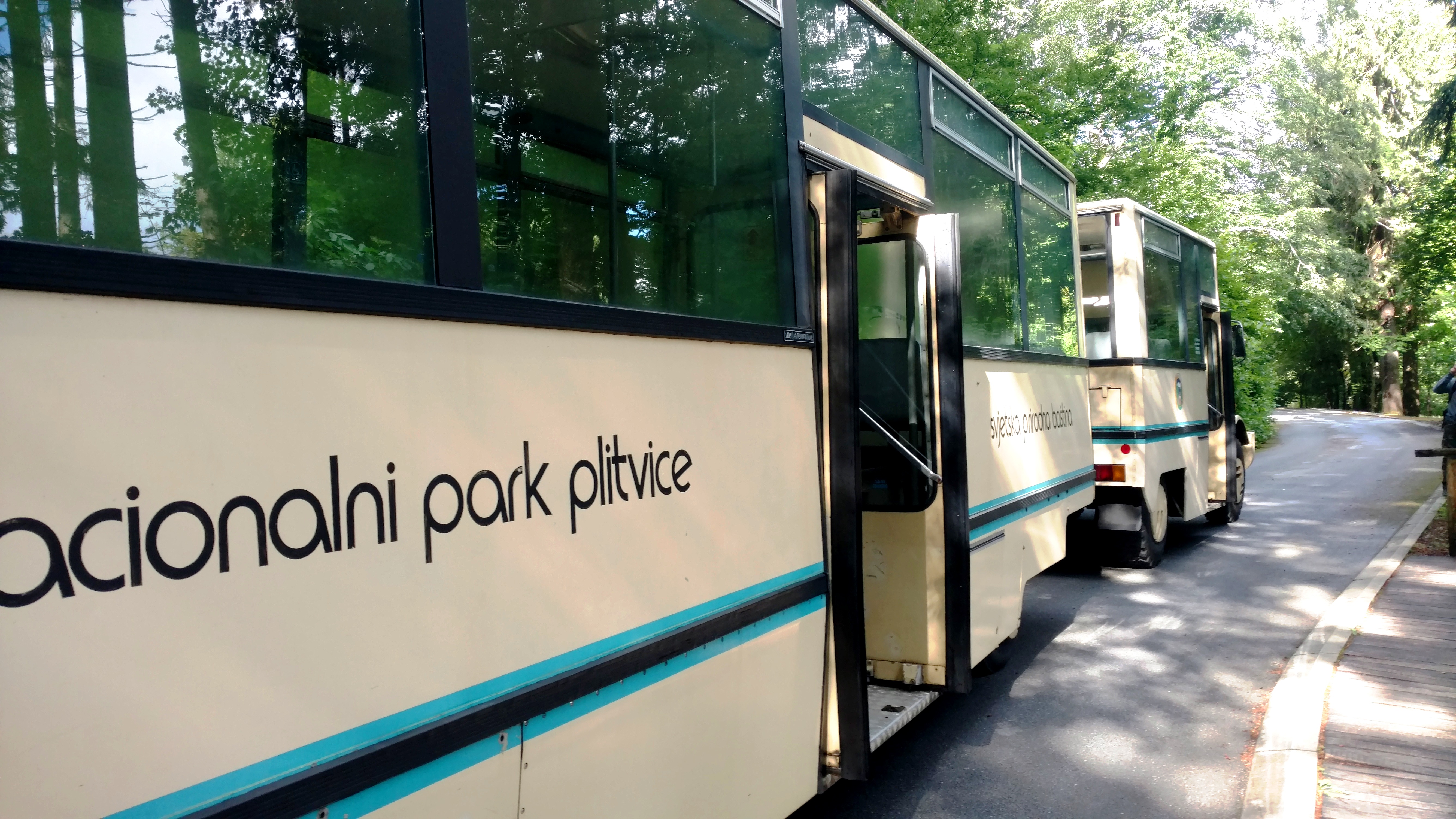 People mover takes us to the top (L.Compisi)
People mover takes us to the top (L.Compisi)
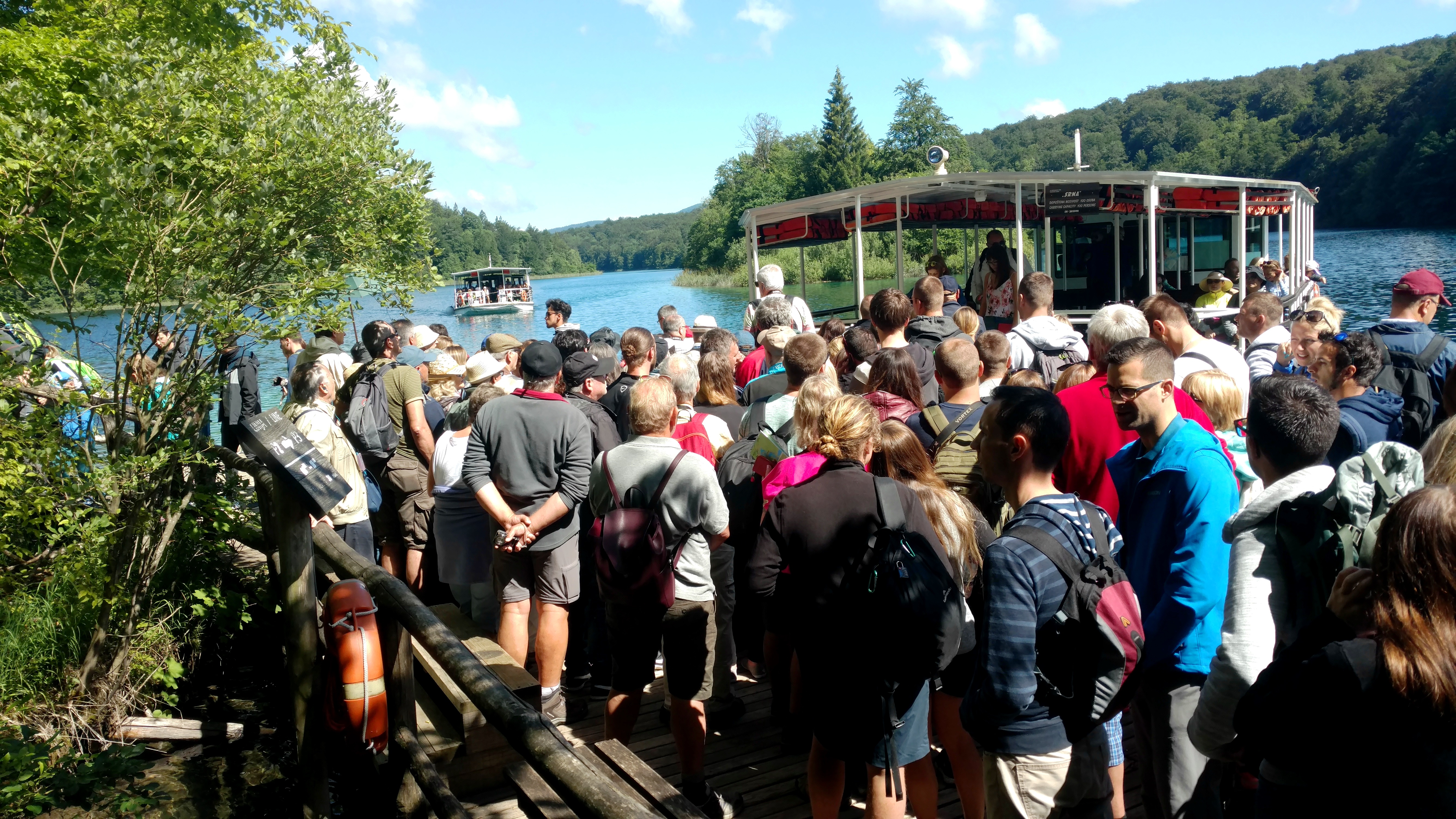 Crowds build as we await the ferry to the lower lakes (L.Compisi)
Crowds build as we await the ferry to the lower lakes (L.Compisi)
Entrance to the park is subject to variable charges depending upon the season and park entry times. Children under 7 enter free of charge. Children 7 – 18 and adult entry fees range from 35 HRK ($5.50) to 150 HRK ($23.50) per day.
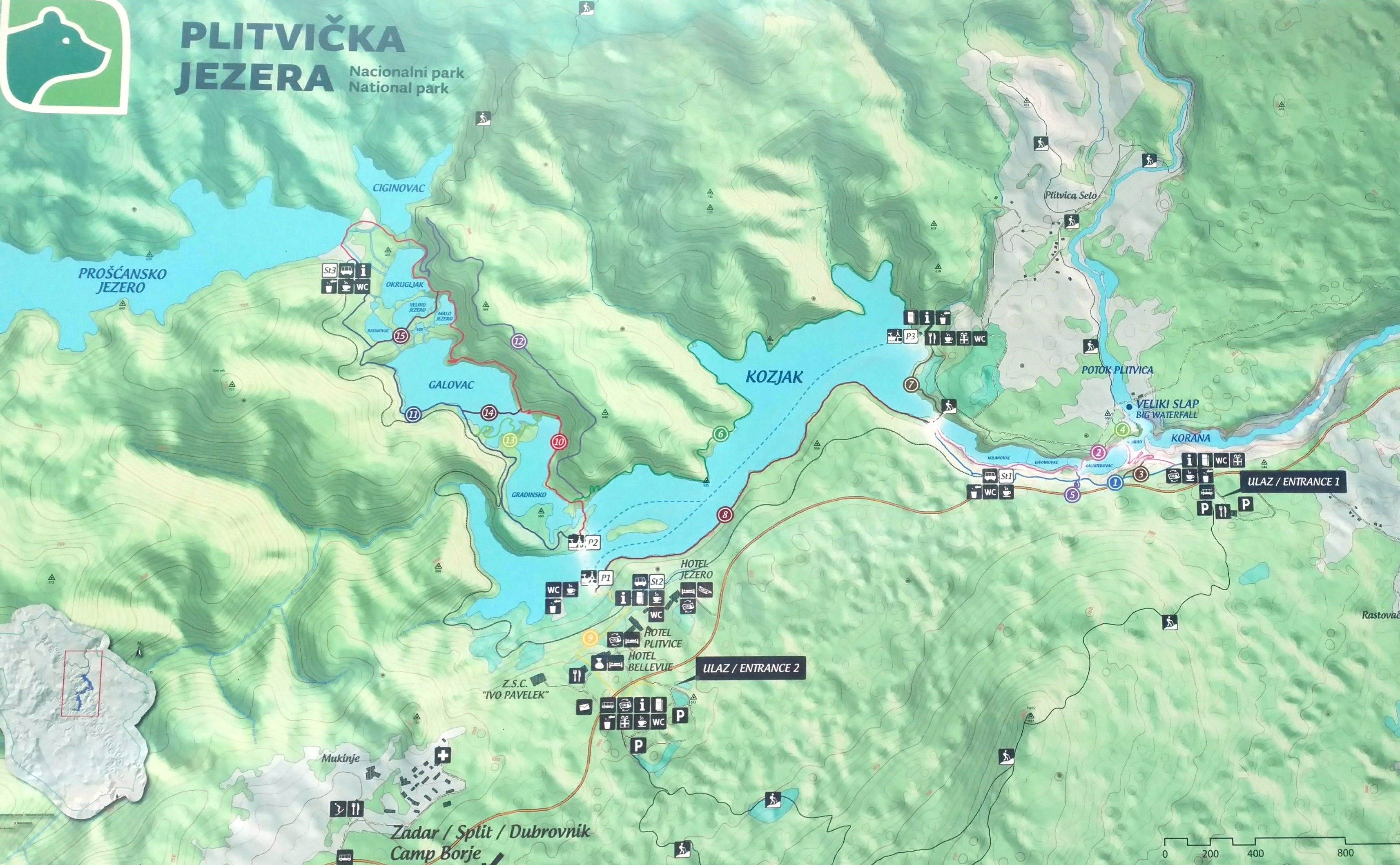 Map of the Plitviče Lakes National Park (L.Compisi)
Map of the Plitviče Lakes National Park (L.Compisi)
Tips: Arrive as early as possible and take the people mover to the top and hike down. You’ll transit for the first 3 miles with less human traffic. If you arrive at the ferry boat before noon you will have avoided some of the crowds. There is probably no way to avoid the crowds at Veliki Slap, a 78m-high (that’s 256 feet) waterfall that many tourists wait in long lines to walk under. We didn’t do this as the lines were too long and you can’t see the falls from there.
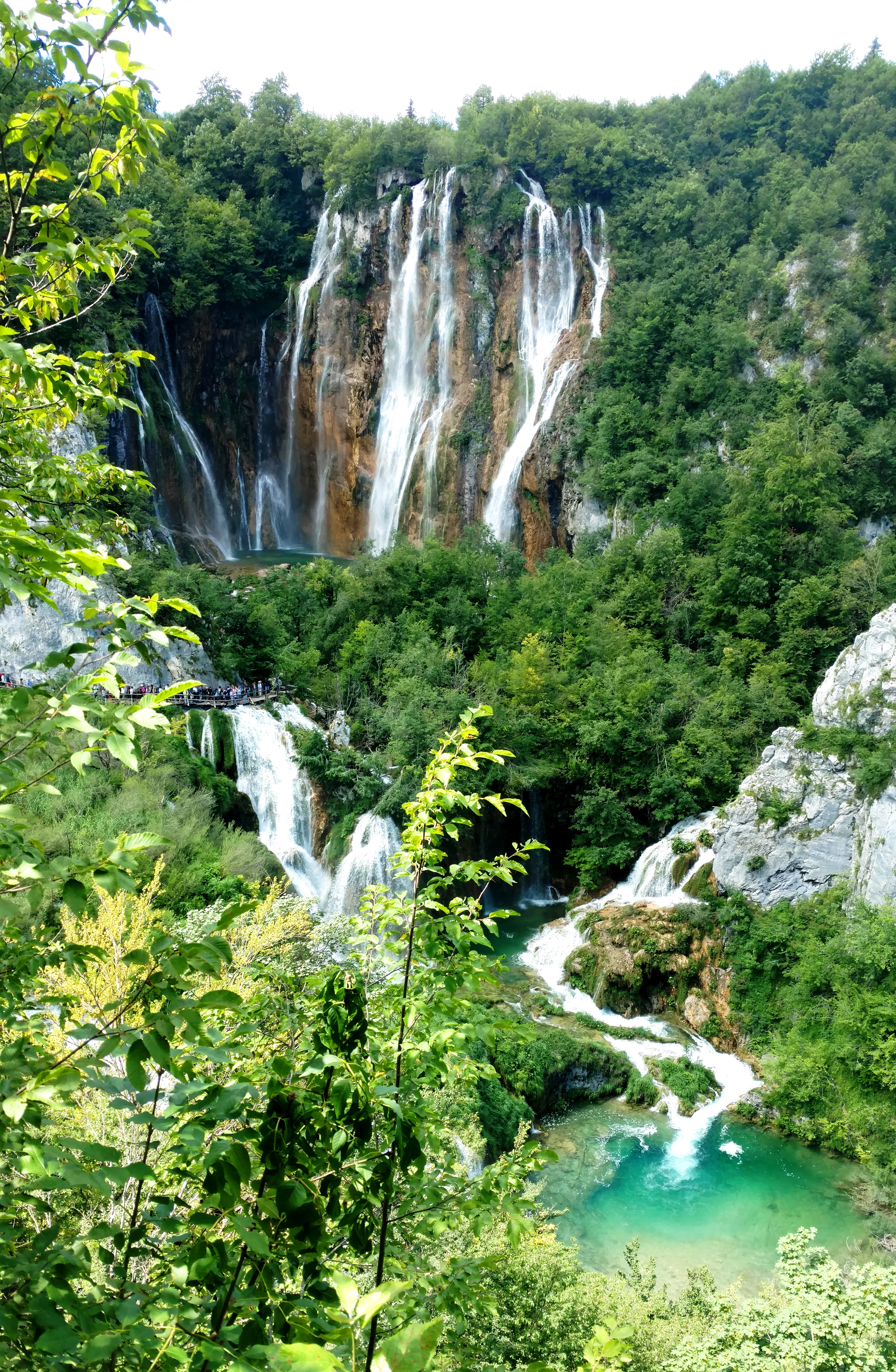 Veliki Slap, a 256′ high waterfall – note people lined up left center (L.Compisi)
Veliki Slap, a 256′ high waterfall – note people lined up left center (L.Compisi)
Getting there: From the Adriatic coastal town of Senj, the road distance is about 110 km (68 mi). The nearest airports are Zadar, Zagreb and Rijeka. The nearest train stations are Josipdol and Plaški, although no direct bus connection from these train stations to the lakes exists. Using public transport the lakes can easily be reached by direct bus lines from Zagreb, Karlovac, Zadar or Split.
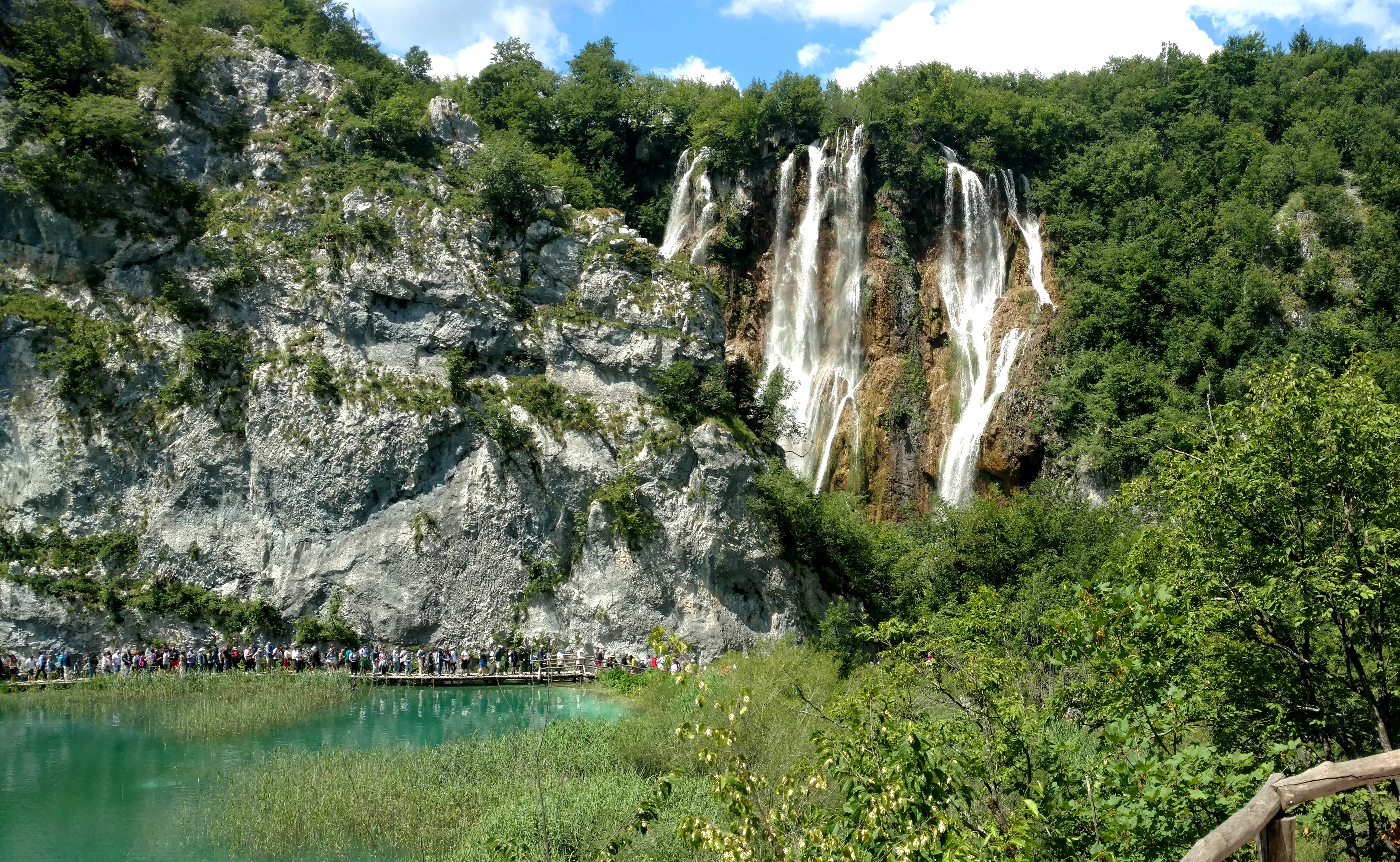 Veliki Slap, better view of crowds along lake (L.Compisi)
Veliki Slap, better view of crowds along lake (L.Compisi)
Side Note: We were very fortunate to be traveling through Croatia (and later France) during the 2018 FIFA World Cup playoffs. It was quite exciting to be strolling down some ancient streets in Split and Dubrovnik with large screens televisions outside at restaurants, bars and cafes as both locals and tourists cheered Croatia along as it achieved the finals, alas, ultimately losing to France.
Keep your eyes digitally peeled for the next installment of our most excellent European Vacation!